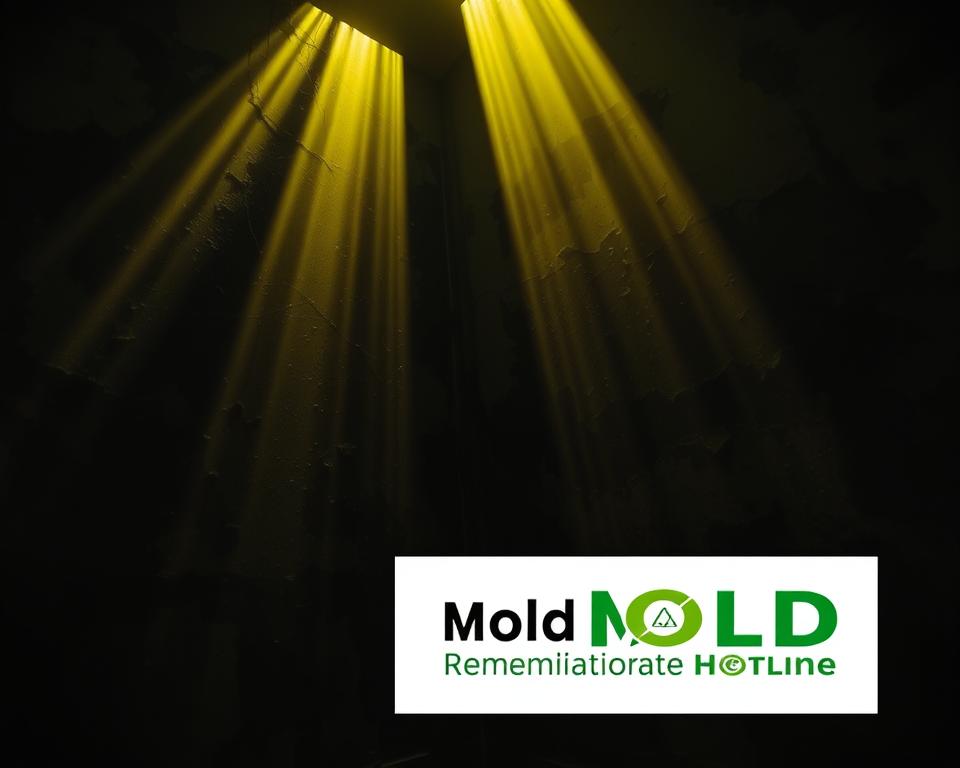Did you know over 50% of American homes contain some form of fungal growth, yet fewer than 5% of residents report severe reactions? This statistic challenges common fears surrounding dark-colored fungal varieties often found in damp areas. While certain species like Stachybotrys chartarum receive significant attention, research shows their effects align with other common household fungi.
Reactions to fungal spores vary widely between individuals. Some experience temporary sniffles or skin irritation, while others notice no symptoms. Those with asthma or weakened immune systems may face greater challenges, particularly with prolonged exposure in poorly ventilated spaces.
Understanding these differences helps homeowners prioritize effective cleaning strategies without unnecessary alarm. Proper moisture control and ventilation often prove more critical than extreme remediation measures. This guide clarifies misconceptions while offering practical solutions for maintaining safer indoor environments.
Key Takeaways
- Dark-colored fungi show similar risk profiles to other common household varieties
- Individual responses depend on genetics, existing conditions, and exposure duration
- Moisture control remains the most effective prevention strategy
- Immediate cleaning benefits everyone, especially sensitive groups
- Professional evaluation helps confirm suspected growth patterns
Understanding Black Mold: Facts and Figures
Stachybotrys chartarum thrives where warmth meets dampness, forming distinctive dark patches on household surfaces. This organism requires cellulose-rich materials and consistent moisture to establish colonies, making many building components ideal hosts.
What Is This Fungus?
Often appearing slimy or powdery, this microbe feeds on organic matter in paper, wood, and drywall. Unlike surface-level mildew, it penetrates porous materials, making complete removal challenging without addressing underlying water issues.
Where Does It Grow?
Problem areas cluster around moisture sources. Basements with poor airflow top the list, followed by:
- Bathrooms (shower grout, under sinks)
- Window frames with condensation
- Wall cavities near leaking pipes
| Material | Risk Level | Common Locations |
|---|---|---|
| Drywall | High | Bathrooms, basements |
| Wood | Moderate | Window sills, attics |
| Insulation | Severe | Wall cavities, crawl spaces |
Surprisingly, even painted surfaces and fabrics can harbor growth when humidity exceeds 60%. Regular inspections of HVAC systems and hidden spaces prevent undetected spread.
Toxic black mold health risks
Invisible reproductive cells from fungi become airborne hazards in damp environments. These particles measure 2-10 microns – small enough to bypass nasal filters and reach deep lung tissue. 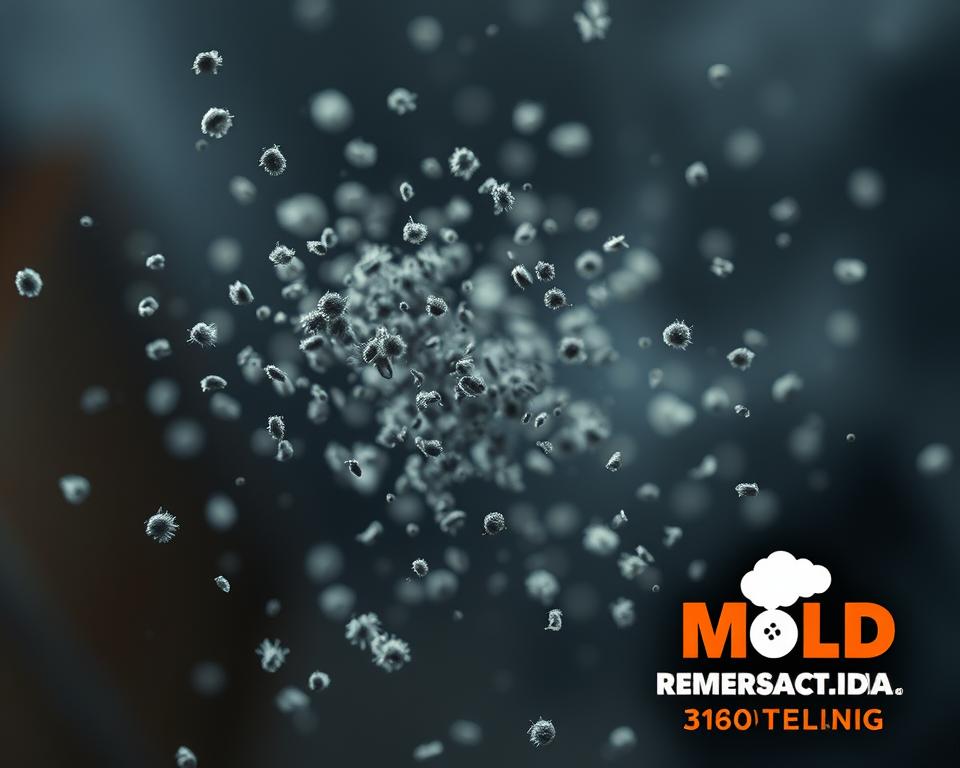
The Science Behind Mold Spores
Fungal colonies release thousands of particles daily to spread their genetic material. Once airborne, these elements can float for hours before settling on surfaces or entering ventilation systems. Research indicates it takes just 15 minutes of activity in contaminated areas to disturb settled spores.
Microbial volatile compounds accompany spore release, creating telltale odors. These chemical signatures often provide the first warning of hidden growth behind walls or under flooring. Sensitive individuals might notice eye irritation or nasal congestion before visible signs appear.
| Factor | Impact Duration | Body Response |
|---|---|---|
| High spore concentration | Immediate (0-2 hrs) | Sneezing, itchy eyes |
| Moderate exposure | Delayed (2-48 hrs) | Congestion, fatigue |
| Chronic conditions | Cumulative (weeks+) | Respiratory inflammation |
Immune reactions vary based on genetic factors and prior sensitization. Mast cells in sensitive individuals release histamine when detecting specific protein markers on spores. This biological process explains why two people in the same environment may experience completely different symptoms.
Health Impacts of Mold Exposure
Have you ever wondered why some individuals react strongly to musty environments while others remain unaffected? Our bodies respond differently to airborne particles based on biological factors and environmental conditions. 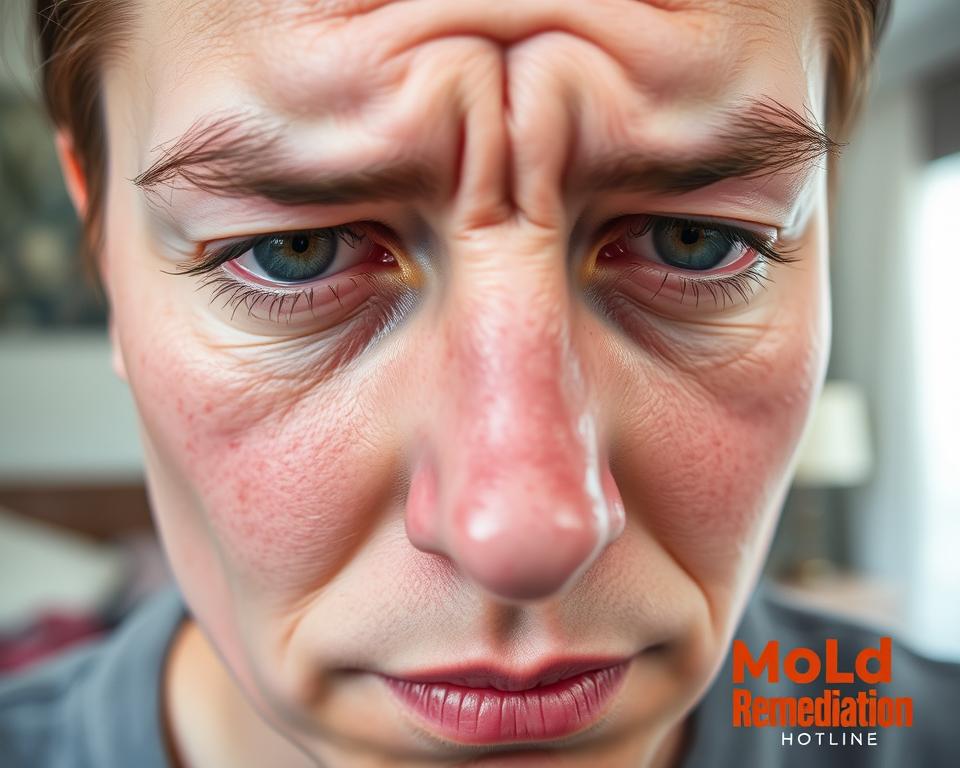
Allergy Symptoms and Respiratory Effects
Nasal congestion and persistent coughing rank among the most frequent reactions. Research shows even brief exposure can trigger eye irritation or throat discomfort in sensitive individuals. A 2004 Institute of Medicine study confirmed these patterns extend beyond allergy sufferers.
Asthma patients often face heightened challenges. Spore inhalation may tighten airways within minutes, requiring emergency inhalers. One ER nurse observes: “We see a 30% increase in asthma-related visits during humid summer months when spore counts peak.”
Infections and Immune System Concerns
Those with weakened defenses face different threats. Fungal spores can bypass protective mechanisms, settling in lung tissue. This creates infection risks requiring medical intervention.
| Immune Status | Common Reactions | Timeframe |
|---|---|---|
| Healthy | Temporary congestion | Hours-days |
| Compromised | Lung infections | Days-weeks |
| Allergic | Chronic inflammation | Ongoing |
Skin rashes from direct contact affect nearly 15% of exposed populations. Proper cleaning gloves and masks prove essential during remediation efforts. Monitoring air quality helps prevent cumulative effects in vulnerable groups.
Analyzing Mold Spores: Exposure and Reactions
Your sneeze might reveal more than you think about invisible particles floating through your home. Microscopic fungal elements travel through air currents and hitch rides on everyday objects, creating exposure risks even in clean-looking spaces.
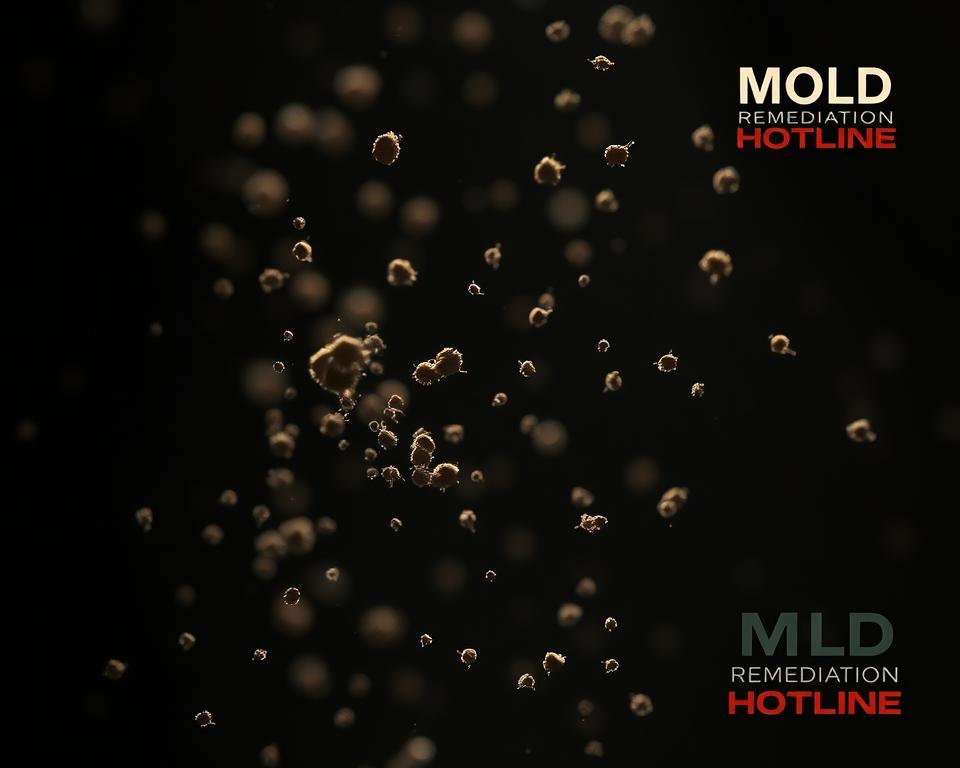
How Mold Spores Enter the Air
These tiny particles exploit multiple entry points. Open windows during pollen season welcome more than fresh air – they let outdoor spores settle on curtains and carpets. HVAC systems can spread contaminated air to every room if filters aren’t maintained.
Common transportation methods include:
- Shoes tracking outdoor particles across floors
- Pet fur collecting spores during walks
- Reusable grocery bags transferring particles from stores
Individual Sensitivity and Reaction Times
Genetic differences create dramatic response variations. One family member might develop itchy eyes within minutes, while another remains unaffected for months. Allergy specialists note: “We see patients who react to 10 spores per cubic meter and others needing 10,000 before showing symptoms.”
| Response Type | Typical Triggers | Onset Time |
|---|---|---|
| Immediate | High spore concentration | 0-15 minutes |
| Delayed | Repeated low-level exposure | 48+ hours |
Non-allergic individuals often mistake early signs like fatigue for stress. However, prolonged exposure can gradually increase sensitivity. Regular air testing helps identify risks before they escalate.
Investigating Mycotoxins and Toxic Effects
The term “toxic mold” sparks anxiety, yet research tells a more nuanced story. While some fungi produce chemical compounds called mycotoxins, their presence doesn’t automatically create health hazards. Scientific studies reveal these substances require specific environmental triggers to become active.
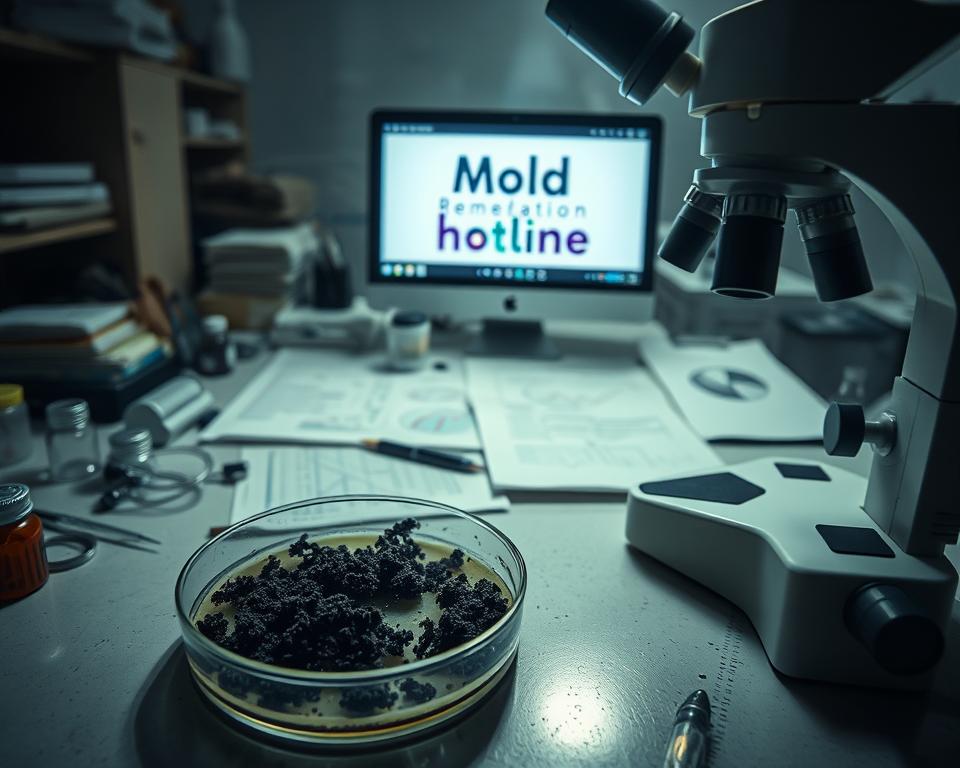
Mycotoxin Myths Versus Medical Evidence
Not all fungi generate harmful compounds, and even those that do often remain inactive. A 2019 CDC report states: “No verified cases of mycotoxin poisoning from airborne spores exist in U.S. medical literature.” Most documented illnesses involve consuming spoiled grains or cheeses rather than household exposure.
Three factors determine potential risks:
- Fungal species (over 100,000 types exist)
- Material composition of growth surfaces
- Consistent moisture levels above 65%
Recent studies show common indoor varieties like Aspergillus and Penicillium produce toxins as frequently as darker-colored species. The table below compares toxin production likelihood:
| Material | Humidity | Toxin Risk |
|---|---|---|
| Drywall | 70%+ | Moderate |
| Wood | 60-69% | Low |
| Food | Any | High |
Focusing on moisture control and proper ventilation remains more effective than fearing specific colors or types. Allergy management outweighs theoretical toxin concerns for most homeowners.
Preventing Mold Growth and Ensuring Healthy Indoor Air
Maintaining a fungus-free environment begins with managing two invisible factors: humidity and airflow. Proper moisture control creates an unwelcoming habitat for unwanted organisms, while fresh air circulation disrupts their ability to settle.
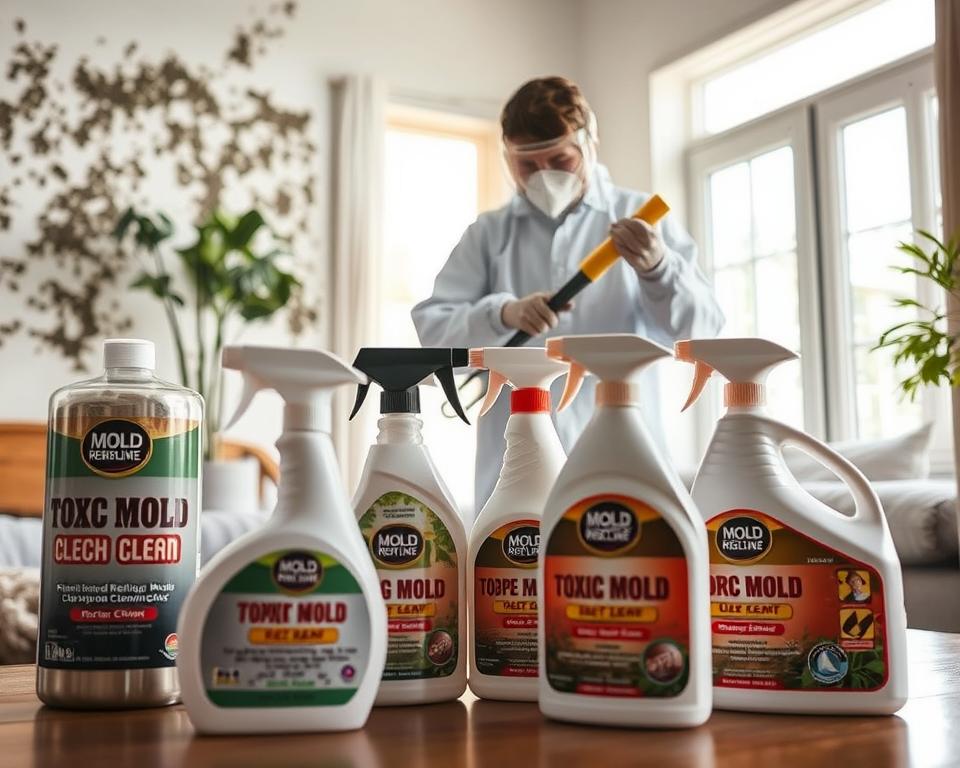
Cleaning Strategies That Work
Hard surfaces respond well to routine cleaning. A simple mix of dish soap and warm water removes most growth when caught early. For stubborn cases, 1 cup of bleach diluted in 1 gallon of water proves effective on non-porous materials like tiles or glass.
Always wear gloves and open windows during cleaning. Porous items like carpets or insulation often require replacement if heavily affected. Regular HVAC filter changes (every 90 days) stop spores from recirculating.
Moisture Control Essentials
Keeping indoor humidity under 50% stops growth before it starts. Dehumidifiers work best in basements, while air conditioners manage whole-house levels during summer. Bathroom fans should run during showers and for 20 minutes after.
| Prevention Method | Effectiveness | Effort Required |
|---|---|---|
| Dehumidifiers | High | Medium |
| Exhaust Fans | Moderate | Low |
| Leak Repairs | Critical | High |
Fix plumbing leaks within 24 hours to avoid hidden problems. Check under sinks and behind appliances monthly. Proper ventilation in kitchens reduces steam buildup that condenses on cool surfaces.
Safe Mold Remediation: DIY vs. Professional Help
Choosing between DIY solutions and expert intervention depends on contamination levels and material types. Small affected areas under 10 square feet often respond well to careful cleaning. Larger amounts or hidden growth behind walls typically require specialized equipment and containment protocols.
Precautionary Measures During Cleanup
Protective gear forms the first defense against airborne particles. Wear N-95 masks, gloves, and disposable clothing during any removal process. Seal work areas with plastic sheeting to prevent spore dispersion through air vents.
Use EPA-approved cleaning products for non-porous surfaces like tiles or glass. Avoid mixing chemicals like bleach and ammonia, which create dangerous fumes. Always test solutions on hidden spots first to prevent surface damage.
Those with respiratory sensitivities should avoid cleanup tasks entirely. Open windows and run fans for 48 hours post-cleaning. Monitor humidity levels below 45% to discourage regrowth.
Professional services become essential when dealing with insulation or structural materials. Certified teams use moisture meters and air scrubbers to ensure complete removal. Their methods prevent cross-contamination better than most DIY approaches.
